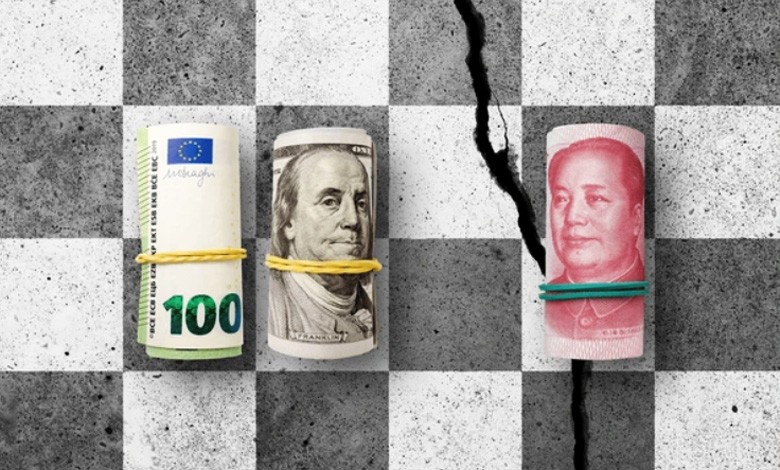The race for leadership: Can Europe outpace China and the US in key sectors?

Although Europe is making significant efforts to support its technology industries, in particular the production of batteries for electric vehicles and semiconductors, it still faces serious challenges in competing with the superpowers China and the United States.
State aid does not always bring expected results
Yes, Northvolt AB, a Swedish battery manufacturer, received subsidies in the amount of 912 million euros for the construction of a plant in Germany. However, due to the slowdown in demand, the company is forced to cut jobs and sell assets. This highlights the volatility of the market and the challenges that European companies face when trying to compete on a global level.
And here’s more example how even large investments do not always guarantee success in difficult economic conditions. Intel Corp.’s planned plant in Germany, which received 10 billion euros in subsidies, has been delayed by the company’s decision to cut costs.
These investments were supposed to become a geopolitical weapon to protect valuable supply chains and help achieve the Eurozone’s climate goals. But at the moment, they are more like a political “hot potato”, as Sweden rules out the possibility of saving Northvolt, and German politicians demand the cancellation of Intel subsidies or their redistribution.
The fears of skeptics are confirmed after the precedent that happened in 2022: France and Germany provided more than 500 billion euros of state aid, but this doping did not become a panacea for European industry. A generous government financial injection has failed to save Europe from an industrial nightmare: damage from the war in Ukraine and US-China competition are still hurting energy-intensive industries like chemicals, squeezing automakers like Volkswagen AG, and threatening jobs.
The situation is aggravated by the fact that obtaining and distributing state aid can be difficult and long, which reduces the effectiveness of its use. In addition, European industry is highly dependent on global supply chains, which can be disrupted by geopolitical conflicts or economic sanctions.
“There is no industrial policy in Europe,” stated the CEO of Renault SA. IN his opinion, the lack of a clear industrial policy in Europe leads to the fact that state aid is not always used effectively. Without strategic planning, it is difficult to achieve long-term results.
The dilemma is to continue to support or to quit
It is symptomatic that the demand for electric vehicles – a significant factor in the successful green transition – has decreased in the EU. The high cost of electric cars and rising prices for raw materials for batteries make them less affordable for consumers. The low level of development of charging stations in many EU countries makes it difficult to use this eco-transport. Wars and the instability of the supply of raw materials also affect the production and cost of electric vehicles.
European carmakers are calling on the EU government to support the industry by revising emissions targets for combustion engine cars as sales of electric cars continue to fall.
It is worth noting that political and national differences in Europe also affect the effectiveness of economic policy and state aid. Although Europe’s largest economies – France and Germany – agree on the importance of supporting large companies, they have different approaches to other economic issues. This creates difficulties in the formation of a single industrial policy of the EU. In addition, their leaders face a loss of voter confidence, making decision-making difficult.
Meanwhile, the smaller countries of the Eurozone fear that the subsidies given to the big countries – France and Germany – will distort competition and negatively affect their economies. This creates additional tension within the EU.
Europe has set ambitious targets to reduce emissions, including a ban on internal combustion engines by 2035. This is causing concern among investors and company executives, who fear that political interference could lead to failures similar to the bankruptcy of the American company Cylinder, which received state support, but could not survive.
Solyndra produced solar panels using innovative thin-film solar cell technology. At one time, the company received significant government support, including a $535 million loan guarantee from the US Department of Energy as part of the Obama administration’s economic stimulus program.
Despite these investments, the subsidized startup faced serious challenges. The main reason for the bankruptcy was competition from Chinese solar panel manufacturers who were heavily subsidized by their government and could freely dump. In addition, Solyndra’s technology has proven to be less efficient and more expensive to manufacture compared to traditional silicon panels.
Finally, in September 2011, the company declared bankruptcy, closed factories and laid off more than a thousand workers. This caused a significant political resonance and criticism from the opponents of the Obama administration, who pointed to the inefficiency of the use of public funds.
The battery cost gap in the context of global competition
The EV Battery Price Index shows that battery prices in different regions of the world are gradually converging. However, China is still the cheapest producer, which gives it a significant competitive advantage.
Europe has the potential to develop new battery technologies, but competition with China remains a serious challenge. China currently dominates the global battery market, with a production capacity of 655 GWh, accounting for 76% of the world’s total capacity. France and Germany are actively investing in the development of their own production facilities, but they are still far from the Chinese scale.
A return to an active industrial policy in Europe requires a realistic approach. For example, subsidizing gigafactories like the ones Tesla is building can cost up to $1 million per job created. This will not necessarily lead to a significant increase in the share of manufacturing in a service-dominated economy like France.
In 2021, the actual production of batteries in the EU was only 26% of the declared capacity. This shows that even with subsidies, ramping up production can be a difficult task.
Manufacturing high-tech products like batteries and chips is risky and requires significant investment in research and development. This can lead to failure, even with government support. For example, OpenAI’s Sam Altman planned to spend $7 trillion on 36 chip factories, but his idea was ridiculed by executives at Taiwan Semiconductor Manufacturing Co., calling him a “podcasting bro.”
It is worth recalling that China and the US have significant advantages in the production of batteries and microcircuits due to lower costs and more developed infrastructure. European companies may not be able to compete, even with subsidies. Some investors believe that sometimes it is better to focus on your strengths. For example, Europe stands to gain more from cheap imports of solar panels than from trying to compete with China in their production.
These aspects highlight the complexity and risks associated with industrial policy and subsidizing high-tech manufacturing. It is important to consider both economic and political factors when making decisions in this area.
Abandoning industrial policy, particularly in the battery sector, may be short-sighted. Europe has strong patents and innovation, but weak manufacturing. Dependence on the USA and China in conditions of geopolitical tension is dangerous. Loss of battery production could lead to loss of jobs and investment. Europe may have a shot at new battery technologies, but China’s dominance is hard to beat.
Successful cases of state-subsidized businesses
Industrial policy can have both failures and successes, as in the case of Airbus. This company was created as a consortium of European aircraft construction companies and, thanks to the support of governments, became one of the leaders of the world aviation market. This shows that with the right strategy and government support, Europe can make significant progress in critical sectors.
However, as with any industrial policy, there are risks. For example, insufficient coordination between EU member states or insufficient funding can lead to failures. It is important that Europe continues to invest in research and development and provides an enabling environment for innovative companies.
Not all companies are worth saving, and not all sectors are strategic. We need more competition and dynamism. The choice of strategic sectors should be considered, as in the case of the American one DARPA. The latter is an example of a successful government organization engaged in the development of advanced technologies for US national security. Her model can be useful for other countries seeking to strategically select and develop critical sectors.
Key aspects of DARPA’s success are as follows. The organization is quite autonomous in decision-making, and therefore quickly responds to new challenges and opportunities. The agency is small in size, therefore flexible. Most of the research is carried out by external partners – universities and private companies. DARPA programs are time-limited, which creates a sense of urgency and promotes rapid innovation.
Why is this case important for Europe? The Old World can use a similar approach for the development of its strategic sectors – AI, cyber security, biotechnology, etc. The choice of strategic sectors should be considered and based on long-term national interests and opportunities for innovation.
Countries must think regionally, not nationally. High energy costs and the need to increase research and development costs are separate issues.
Trade policy is also important, especially regarding tariffs on Chinese electric vehicles. All this must work together with foreign policy to secure raw materials. Europe must move from an export model to a model focused on domestic demand, which requires a softer monetary policy and an integrated market. Developing industrial policy is difficult, but worth the effort.
Tatyana Morarash





